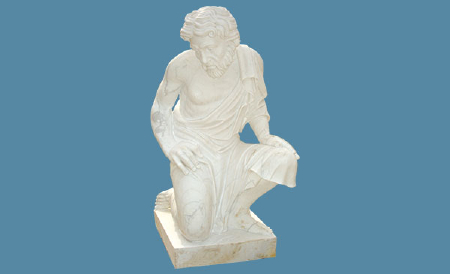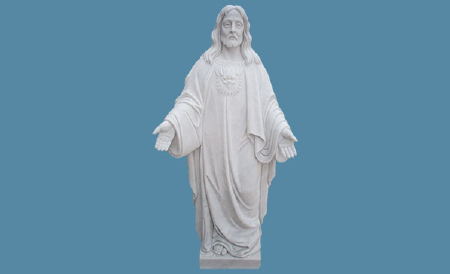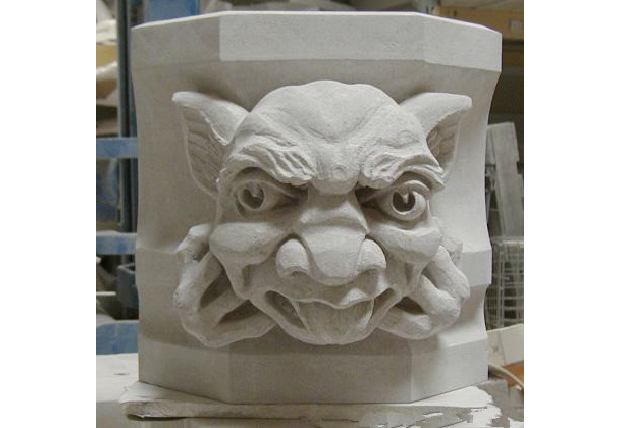
Marble carving-The Indiana State Museum Gargoyle
Product DescriptionFollow the stages, from the block of stone to the finished sculpture
I carved these gargoyles for a limestone exhibit at the new Indiana State Museum at White River State Park.
The small model sitting on the block of stone
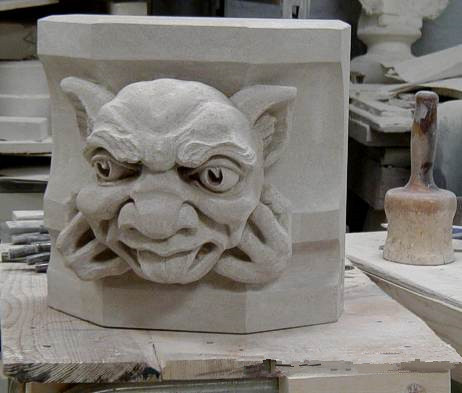
The museum includes a three story tall walk-through Quarry exhibit, demonstrating a typical Indiana limestone quarry. The gargoyles will go on the bridge leading to the quarry. The exhibit shows the uses of Indiana Limestone and explains the production process.
I started by creating a small scale model, to work out the design and proportions of the piece. In the photo above the model sits on the blocks of stone from which I carved the gargoyles.
Reproductions of the model are available in my Gargoyle Store.The geometric forms are cut to shape,I start with a square block of limestone.
1Blocking out and cutting architectural molding
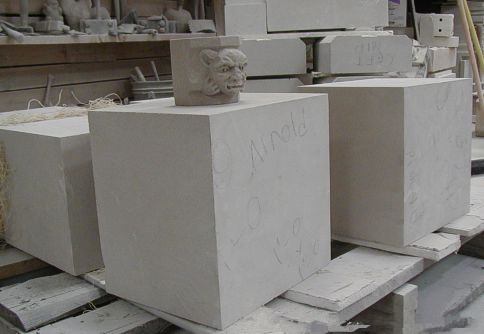
I prepared five pieces for the exhibit to show how a sculpture is transformed from a raw block of stone to a finished work.
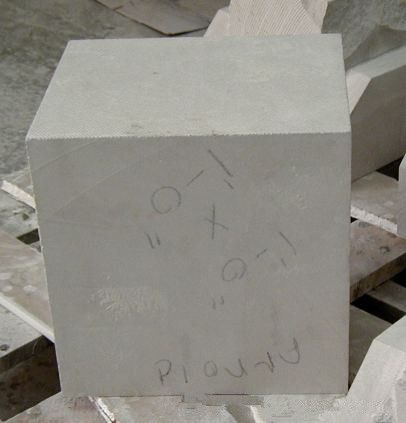
1. The rough block: This is the block of stone as it comes from the stone mill. It is sawn to size, following specifications provided by an architect, building contractor or carver. Typically there are crayon markings indicating the dimensions and job name.
2. Blocking out and cutting architectural molding: The stonecutter, working from the approved drawings, creates templates of the molding profiles. He marks these profiles on the stone, and confirms all the angles and edges using measuring tools and gauges. The architectural moldings are chiseled from the stone and the basic area for the marble carving is blocked out. This stage of the work is very geometric.
Roughing out 4. Modeling the forms
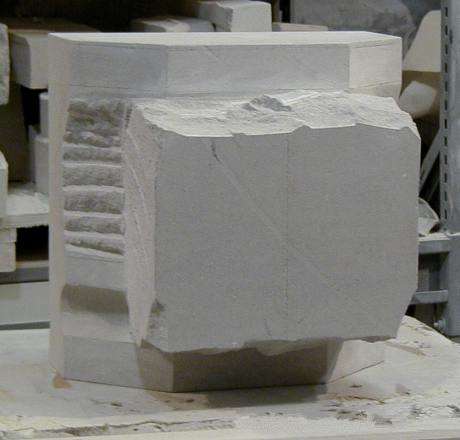
3. Roughing out: The stone carver roughs out the general shape of the gargoyle, and the moldings are continued into the marble carving. Working from a small sketch model (called a "bozzetto") or from drawings, the overall shape emerges from the block. The position of the major features, including the nose, eyebrows and ears, are defined.
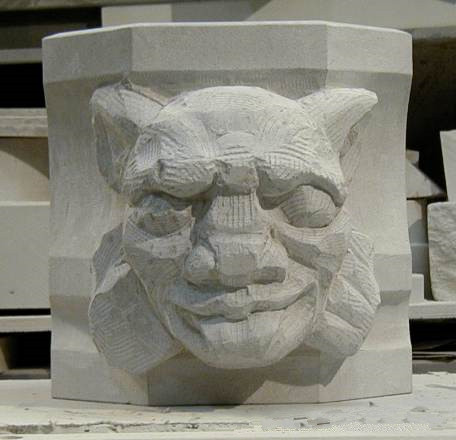
4. Modeling the forms: The forms are modeled with the tooth chisel, and all of the main forms and shapes are defined. Work takes shape following the general anatomy of the gargoyle. The major areas of light and shadow are defined, which give the gargoyle its character and movement. It is at this stage that the character of the piece needs to emerge.
The finished marble carving
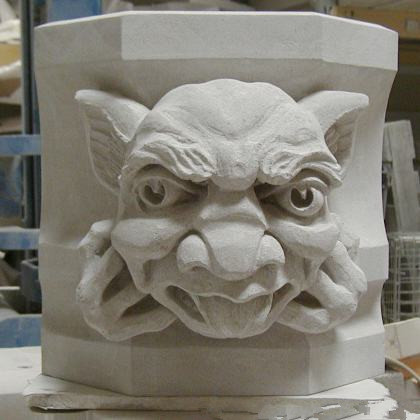
5. The finished work: The eyes give direction and character. A carver works with light and shadow, creating contrast and striving for a dramatic effect that will read clearly from any distance. The undercutting, angled forms, and texture help bring the work to life. The final touch is the "banker mark". This is the carver's mark, a signature of sorts, generally cut into the back or side of the stone where it will be hidden inside the wall.
This is a tradition going back to the Middle Ages. A stone carver or stonecutter would mark each piece he did. This was done primarily for two reasons. The craftsmen were paid based on production, so at the end of the week the master mason would total up what each person had done and pay them accordingly.
Also, this gave accountability- if a piece was cut wrong the responsibility would be clear. The tradition of the banker mark has continued through the ages, and some contemporary carvers in the United States and Great Britain still practice it.
